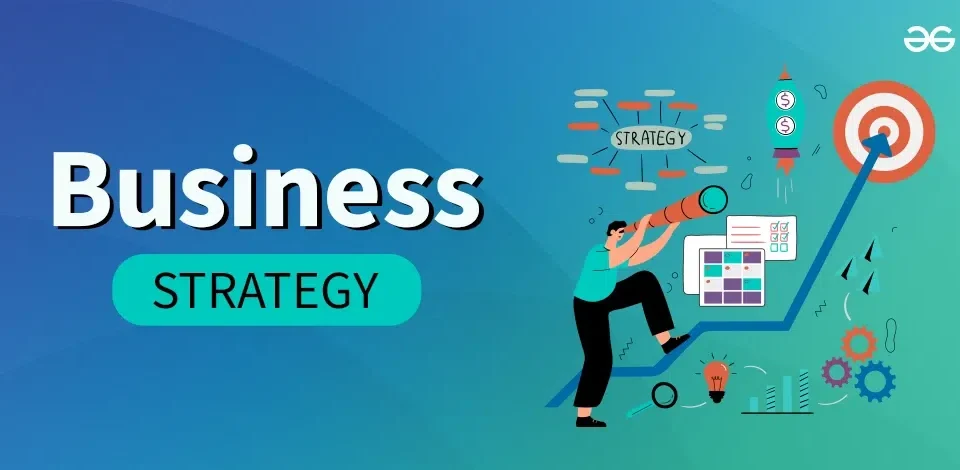AI Business Strategy: What You Need To Know

In the digital age, artificial intelligence (AI) has transcended its initial tech-centric boundaries to become a cornerstone of strategic business innovation. Businesses across industries are recognizing the transformative power of AI, not merely as a tool for automation but as a comprehensive strategy that can redefine the way they operate, innovate, and compete. Whether it’s through enhancing customer experiences, optimizing operations, or creating new business models, AI is reshaping the landscape of business strategy. Understanding how to harness AI effectively is imperative for leaders aiming to thrive in this new era of digital disruption.
What is AI Business Strategy?
An AI business strategy involves the deliberate and structured integration of artificial intelligence technologies into the core business processes to fundamentally transform operations, drive growth, and create sustainable competitive advantages. This strategy is not about the ad-hoc use of AI tools for isolated tasks; rather, it encompasses a holistic approach that permeates various facets of the organization.
Key Components of an Effective AI Business Strategy:
- Strategic Alignment:
- Goal Setting: The first step in crafting an AI strategy is to define clear, actionable goals that AI initiatives will support. This might include increasing operational efficiency, enhancing customer satisfaction, or driving innovation in products and services.
- Alignment with Business Objectives: AI initiatives must align with the broader business objectives to ensure they contribute positively to the company’s strategic goals. This alignment guarantees that AI implementations deliver value that is both measurable and impactful.
- Understanding AI Capabilities:
- Technological Insights: It is crucial for business leaders to have a fundamental understanding of AI technologies and their potential applications. This knowledge helps in identifying which aspects of the business can be enhanced by AI.
- Feasibility and Scope: Assessing the feasibility of integrating AI into specific business processes and understanding the scope of transformation required are essential. This involves considering technical, financial, and human factors.
- Data Strategy:
- Data Management: AI systems require high-quality data to function effectively. Developing a robust data management strategy that ensures data accuracy, accessibility, and security is foundational.
- Data Utilization: Effective AI strategies leverage data comprehensively to generate insights, predict trends, and personalize customer interactions, making data utilization a critical component of the strategy.
- Implementation Roadmap:
- Pilot Projects: Starting with pilot projects can help in understanding the practical challenges and benefits of AI before a full-scale roll-out.
- Scalability: Plans for scaling successful AI projects from pilot to company-wide implementation must be considered early in the strategy development phase to ensure smooth transitions and scalability.
- Ethical Considerations and Compliance:
- Ethical AI Use: Ensuring that AI is used ethically and responsibly is an integral part of an AI business strategy. This includes considerations around bias, privacy, and transparency.
- Regulatory Compliance: Adhering to relevant regulations and standards is crucial, especially in industries heavily regulated like finance and healthcare.
An AI business strategy is dynamic and requires continuous evaluation and adaptation as technology evolves and business needs change. By systematically integrating AI into business processes, organizations can not only achieve immediate improvements but also lay the groundwork for future innovations.
Starting with AI Strategy Development
To effectively implement AI, businesses must first develop a solid strategy. This involves:
- Assessing current operations to identify processes that AI can enhance or streamline.
- Setting targeted goals for what AI is expected to achieve, such as increasing customer engagement or streamlining supply chains.
- Selecting appropriate technologies that align with specific business needs and goals.
AI for Small Businesses
AI isn’t just for large corporations; small businesses can also harness it to compete effectively against bigger companies. Affordable AI solutions help level the playing field by enhancing efficiency and customer engagement without proportionally increasing costs.
1. Customer Service Automation
- Chatbots: Small businesses can use AI-driven chatbots to provide round-the-clock customer support, freeing up staff for more complex tasks.
2. Marketing Campaign Optimization
- Data-Driven Advertising: AI tools can target marketing efforts more precisely, optimizing advertising spend based on customer data and behavior.
3. Operational Efficiency
- Inventory and Process Automation: AI can streamline operations from inventory management to routine administrative tasks, allowing small businesses to focus on growth and strategy.
These AI applications enable small businesses to operate more efficiently, market more effectively, and deliver exceptional customer service, creating opportunities to expand and thrive in competitive markets.
How Can AI Help My Business?
AI’s potential to transform businesses includes:
- Enhancing Personalization: AI can tailor experiences to individual customer preferences, increasing satisfaction and loyalty.
- Boosting Operational Efficiency: By automating routine tasks, AI frees up resources that can be redirected to strategic initiatives.
- Improving Decision Making: With its ability to analyze vast amounts of data, AI provides actionable insights that lead to better decisions.
Case Studies
Exploring how different businesses have successfully integrated AI offers valuable insights. Here are brief examples from various industries:
1. Retail
A leading online retailer uses AI for personalized recommendations and inventory management, enhancing customer satisfaction and operational efficiency.
Further Reading: Retail AI Innovations
2. Finance
A global bank employs AI for risk assessments and customer service improvements, using machine learning for more accurate risk analysis and AI-powered chatbots to handle routine inquiries.
Further Reading: AI in Finance
3. Healthcare
AI assists in diagnostics and patient management at a major healthcare provider, improving the accuracy of disease detection and monitoring patient vitals for better proactive care.
Further Reading: AI Advancements in Healthcare
4. Manufacturing
An automotive manufacturer integrates AI in production lines for real-time monitoring and quality control, significantly increasing precision and reducing defects. This application of AI not only enhances the manufacturing process but also ensures higher product quality and reduced waste.
These brief case studies illustrate the significant benefits of AI across different sectors, highlighting increased efficiency and customer satisfaction as key outcomes of successful AI integration.
Planning for the Future
To remain competitive in a rapidly evolving digital landscape, businesses must continuously adapt their AI strategies. This means staying informed about technological advancements and being ready to adjust business models as necessary.
Conclusion
The integration of AI into business strategies marks a pivotal shift, propelling companies towards significant operational efficiencies and opening doors to unprecedented innovation. As AI technology continues to advance, its influence on crafting robust business strategies becomes increasingly indispensable. Companies proactive in adopting AI are setting themselves up for not just growth but industry leadership. The present moment offers a prime opportunity for businesses to explore and invest in AI, positioning themselves at the forefront of their sectors. Embracing AI now is not just strategic; it is essential for staying competitive in a rapidly evolving marketplace.






